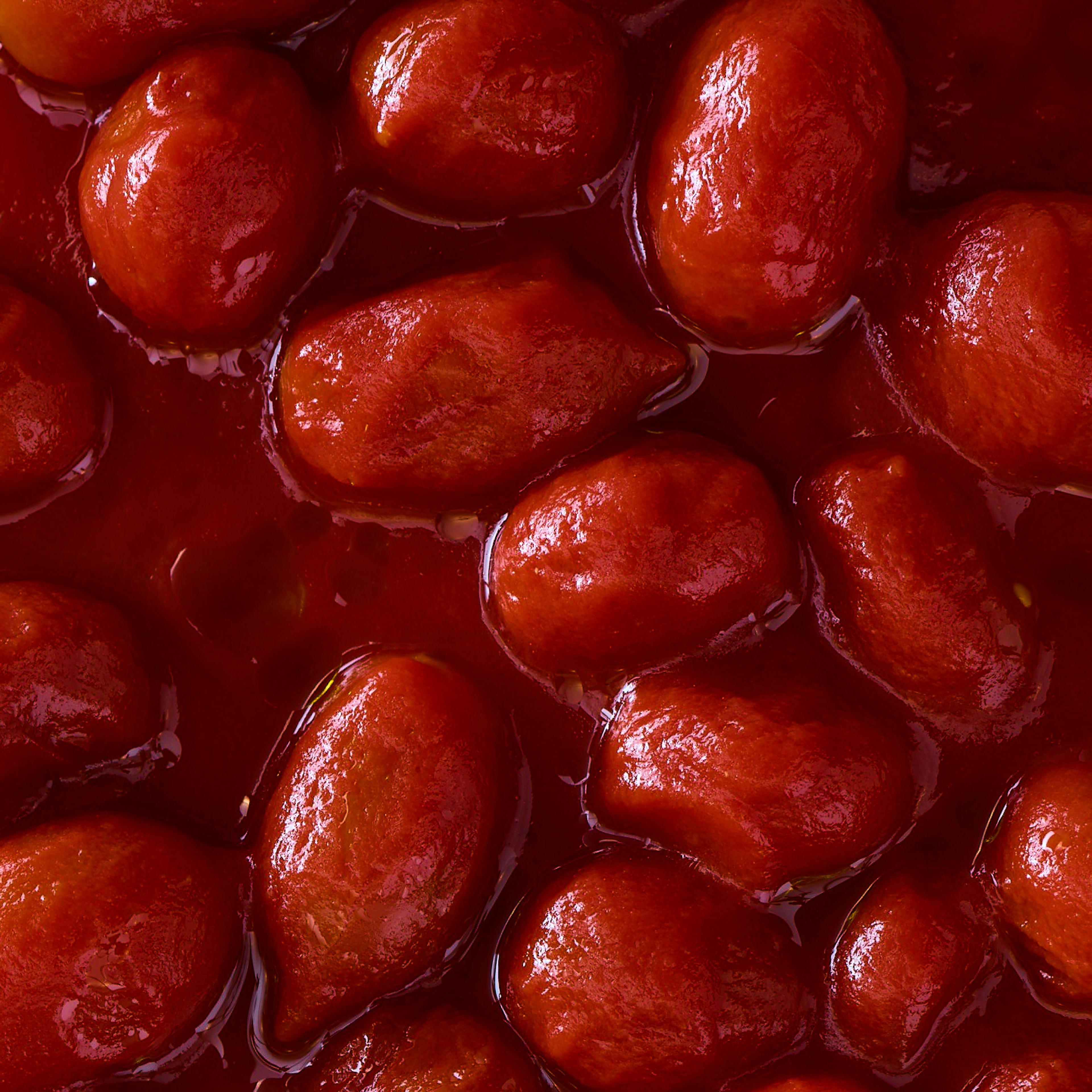Why Everyone Swears by San Marzano Tomatoes
We looked into what makes them the gold standard. Spoiler: It's not just the Italian sunshine.
Published On

Photo by James Ransom
Canned tomatoes are a pantry staple—just ask any chef or home cook. And if you ask which kind is best, San Marzano tomatoes are almost always the top pick. Case in point: during a recent trip to the big box store with a friend, I insisted she couldn’t leave the store without the 3-pack of 28 oz. Centro cans. Actually, I told her to get two. No regrets.
San Marzano tomatoes are largely considered the gold standard, especially when it comes to sauces. Their deep flavor, balanced sweetness, and low acidity aren’t just appreciated, they’re celebrated. But what exactly makes San Marzano tomatoes so special?

Photo by James Ransom
A Tomato With a Legacy
It’s hard to imagine Italian food without tomatoes, but they actually didn’t originate in Europe. Tomatoes come from South America, specifically the Andes regions of Peru, Ecuador, and Chile, and made their way to Europe in the 16th century after the Columbian Exchange. At first, Europeans considered them toxic (thanks to their connection to the nightshade family) and only used them as ornamental plants. But by the 1800s, Italians had embraced the tomato and started growing varieties suited to their land and tastes.
The San Marzano tomato got its start in the small town of San Marzano sul Sarno, in Italy’s Campania region, not far from Naples. Legend has it the seeds came as a gift from the Viceroyalty of Peru to the Kingdom of Naples in 1770. Once planted in the rich volcanic soil near Mount Vesuvius, the tomatoes flourished in the area’s unique climate. Over time, they evolved into something truly distinct.
What Makes San Marzano Tomatoes So Unique?
San Marzanos are a type of plum tomato, but they’re slimmer and a bit longer than your average Roma (which they’re actually related to). They’ve got thinner skin, firmer flesh, and significantly fewer seeds. But what really sets them apart is the taste. San Marzanos have a naturally rich, sweet flavor with just the right amount of acidity, nothing harsh or overpowering. That balance makes them perfect for slow-cooked sauces, because they concentrate beautifully without turning bitter.
Their texture also makes a big difference. They’re less watery than other tomatoes, so you get a thicker, silkier sauce without needing to cook it down forever. The result? A sauce that really lets the tomato flavor shine, often with no need for extra sugar or tons of seasoning.
The San Marzano is, as the Italians might say, perfetto.
Where They Grow
Another thing that makes San Marzanos stand out is their terroir (the French word that basically means “taste of the land”). These tomatoes grow in the mineral-rich volcanic soil around Mount Vesuvius, and that soil—along with the sunny days and cool nights of the Agro Sarnese-Nocerino region—gives them a flavor you simply can’t recreate elsewhere.
To keep the real deal protected, the Italian government gave San Marzano tomatoes Denominazione d’Origine Protetta (DOP) status. Like Parmigiano-Reggiano or Prosciutto di Parma, this certification means only tomatoes grown in that specific region, using traditional methods, can be called San Marzano. It’s taken seriously and with good reason.
Beware of frauds! A lot of the so-called “San Marzano” tomatoes sold outside Italy aren’t the real thing. In fact, most of them aren’t. If you want to make sure you’re getting the authentic ones, look for the DOP label and certification marks from the Consorzio San Marzano. The legit cans will say Pomodoro San Marzano dell’Agro Sarnese-Nocerino DOP. If it doesn’t, you’re probably holding an impostor, and trust me, it won’t taste the same.
Why Chefs and Cooks Love Them
Across kitchens worldwide, San Marzano tomatoes are the go-to for sauces, especially in classic Italian dishes like Neapolitan pizza, marinara, or ragù. Their naturally well-rounded flavor means you don’t have to do much to them, and they won’t overwhelm your dish. Many chefs agree: no other tomato cooks down quite like a San Marzano.
Overall, they’re a dream to work with. Thanks to their low water content and consistent quality, they’re super reliable, which is important in professional kitchens. And even if you’re just opening a can at home, San Marzanos have a flavor that tastes like you’ve been simmering them for hours.
More Than Just a Tomato
San Marzanos aren’t just the “best” tomato; they’re a symbol of culinary tradition. In a world where so much food is rushed, engineered, or overly processed, these tomatoes stand out. They grow slowly, in just the right place, and carry the taste of the sun, the soil, and centuries of Italian cooking wisdom.
Sure, they might cost a bit more, and yes, tracking down the authentic ones takes a little effort. But once you’ve had real San Marzano tomatoes—maybe on a Margherita pizza or simmering away in a pot of Sunday sauce—you’ll understand why they’re considered the gold standard. And you’ll probably want to stock your pantry with as many cans as you can store.